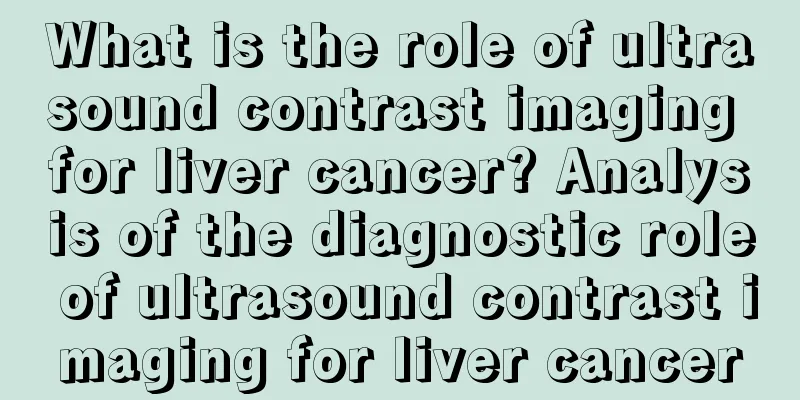Clinical manifestations of liver cancer in the middle and late stages

|
The clinical manifestations of mid- to late-stage liver cancer are as follows: 1. Pain in the liver area Pain in the right upper abdomen is the most common and is an important symptom of liver cancer. The pain is continuous or intermittent, mostly dull or distending. As the disease progresses, the pain intensifies and becomes unbearable. The location of pain in the liver area is closely related to the location of the lesion. If the lesion is located in the right lobe of the liver, it manifests as pain in the right hypochondrium, and if it is located in the left lobe of the liver, it manifests as pain in the subxiphoid process. If the tumor invades the diaphragm, the pain may radiate to the right shoulder or right back; a tumor growing to the right back may cause pain in the right side of the waist. The cause of the pain is that the liver capsule is tightened by the growth of the tumor. Sudden severe abdominal pain and peritoneal irritation signs are caused by rupture and bleeding of cancer nodules under the liver capsule or rupture into the peritoneal cavity, causing intraperitoneal bleeding and peritoneal irritation. 2. Enlarged liver The liver is progressively enlarged, hard, with an uneven surface, nodules or masses of varying sizes, blunt and neat edges, and often with varying degrees of tenderness when palpated. When liver cancer protrudes under the right costal arch or xiphoid process, local fullness and bulge can be seen in the corresponding area; if the tumor is located on the diaphragmatic surface of the liver, the main manifestation is that the diaphragmatic surface is locally elevated and the lower edge of the liver may not be enlarged; cancerous nodules located on the surface of the liver close to the lower edge are the easiest to touch, and sometimes patients can find them by themselves and seek medical treatment 3. Vascular bruits Because liver cancer has abundant and tortuous blood vessels, the arteries suddenly become thinner or the cancer mass compresses the hepatic artery and abdominal aorta, and about half of the patients can hear a blowing-like vascular murmur in the corresponding parts. This sign is of great diagnostic value, but it is not very meaningful for early diagnosis. 4. Portal hypertension Liver cancer is often accompanied by liver cirrhosis, so portal hypertension is often present. Splenomegaly can be caused by tumor thrombosis in the portal vein or splenic vein, or compression of the portal vein or splenic vein by liver cancer. Ascites is a late manifestation, and portal vein and hepatic vein thrombosis can accelerate the growth of ascites; ascites is generally transudate, and bloody ascites is mostly caused by tumor rupture into the peritoneal cavity, and can also be caused by peritoneal metastasis. |
<<: Paraneoplastic syndromes in patients with liver cancer
>>: Pyloric stent implantation for gastric cancer
Recommend
There is a scar on the eyebrow
Everyone is very active during childhood, and som...
Your eyes can tell you about 9 diseases
1. Eyebrow loss: hyperthyroidism or hypothyroidis...
How can we prevent cervical cancer? What details should we pay attention to in preventing cervical cancer?
Bamboo fungus stewed with day lily Ingredients: 1...
Burning sensation of chili pepper fingers
Chili is an indispensable condiment in daily life...
What does lumbar spine MRI examine and what is its function
The lumbar spine is the part that we need to focu...
How much do you know about the early symptoms of laryngeal cancer?
Laryngeal cancer is a malignant tumor of the lary...
What are the benefits of foot massage
We often see many foot massage shops nowadays, bu...
How to prevent pituitary tumors in the elderly
As the elderly are older, their body functions ar...
There is a bone protruding from the heel
Nowadays, there are very few women who do not wor...
What are the symptoms of kidney deficiency and what can you eat to avoid kidney deficiency?
In our daily life, we often hear the word "k...
Are the bugs in bayberry harmful?
In life, many people prefer to eat bayberry, beca...
What are the effects of deer antler wine?
For male friends, making wine with deer antler is...
What are the dangers of a big belly
A big belly, also known as a "general's ...
What are the imported chemotherapy drugs for gastric cancer
At present, the commonly used chemotherapy drugs ...
What should I do if my face keeps turning red after an allergy?
Sensitive skin not only brings harm to people'...









